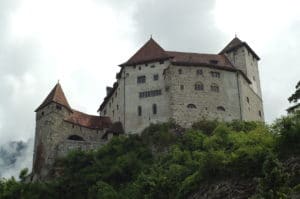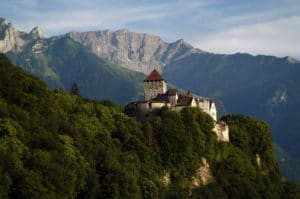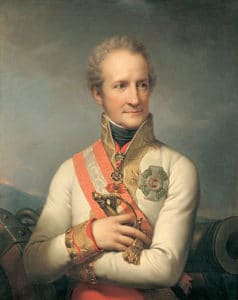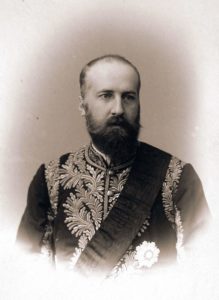
By the early 19th century, as a result of the Napoleonic Wars in Europe, the Holy Roman Empire came under the effective control of France, following the crushing defeat at Austerlitz by Napoleon in 1805. Emperor Francis II abdicated, ending more than 960 years of feudal government. Napoleon reorganized much of the Empire into the Confederation of the Rhine. This political restructuring had broad consequences for Liechtenstein: the historical imperial, legal, and political institutions had been dissolved. The state ceased to owe an obligation to any feudal lord beyond its borders.
Modern publications generally attribute Liechtenstein’s sovereignty to these events. Its prince ceased to owe an obligation to any suzerain. From 25 July 1806, when the Confederation of the Rhine was founded, the Prince of Liechtenstein was a member, in fact, a vassal, of its hegemon, styled protector, the French Emperor Napoleon I, until the dissolution of the confederation on 19 October 1813.

Soon afterward, Liechtenstein joined the German Confederation (20 June 1815 – 24 August 1866), which was presided over by the Emperor of Austria.
In 1818, Prince Johann I granted the territory a limited constitution. In that same year Prince Aloys became the first member of the House of Liechtenstein to set foot in the principality that bore their name. The next visit would not occur until 1842.

Developments during the 19th century included:
1836: the first factory, for making ceramics, was opened.
1861: the Savings and Loans Bank was founded along with the first cotton-weaving mill.
1866: the German Confederation was dissolved.
1868: the Liechtenstein Army was disbanded for financial reasons.
1872: a railway line between Switzerland and the Austro-Hungarian Empire was constructed through Liechtenstein.
1886: two bridges over the Rhine to Switzerland were built.
20th Century:
Until the end of World War I, Liechtenstein was closely tied first to the Austrian Empire and later to Austria-Hungary; the ruling princes continued to derive much of their wealth from estates in the Habsburg territories, and spent much of their time at their two palaces in Vienna. The economic devastation caused by the war forced the country to conclude a customs and monetary union with its other neighbor, Switzerland.
At the time of the dissolution of the Austro-Hungarian Empire, it was argued that Liechtenstein, as a fief of the Holy Roman Empire, was no longer bound to the emerging independent state of Austria, since the latter did not consider itself the legal successor to the empire. This is partly contradicted by the Liechtenstein perception that the dethroned Austro-Hungarian Emperor still maintained an abstract heritage of the Holy Roman Empire.

In 1929, 75-year-old Prince Franz I succeeded to the throne. He had just married Elisabeth von Gutmann, a wealthy woman from Vienna whose father was a Jewish businessman from Moravia. Although Liechtenstein had no official Nazi party, a Nazi sympathy movement arose within its National Union party. Local Liechtenstein Nazis identified Elisabeth as their Jewish “problem”.
